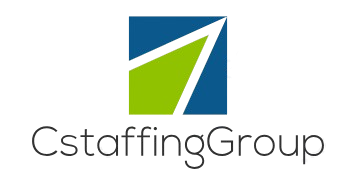Exploring Non-Profit Program Evaluation Techniques
Non-profit organizations play a crucial role in addressing societal issues, from poverty alleviation to environmental conservation. The success of these organizations relies heavily on the effectiveness of their programs in achieving their intended goals. Program evaluation is a systematic method for assessing the design, implementation, and outcomes of these programs. By evaluating their programs, non-profits can ensure accountability, demonstrate impact to stakeholders, and improve overall performance. In this comprehensive guide, we delve into the various techniques used in non-profit program evaluation, highlighting their importance, challenges, and best practices.
The Importance of Non-Profit Program Evaluation

Non-profit program evaluation is essential for several reasons. Firstly, it helps organizations determine whether their programs are meeting their objectives and making a difference in the community. By collecting and analyzing data, non-profits can assess program effectiveness, identify areas for improvement, and make informed decisions about resource allocation. Evaluation also allows organizations to demonstrate accountability to funders, donors, and other stakeholders by showing the impact of their work.
Furthermore, program evaluation provides valuable insights that can inform strategic planning and decision-making. By understanding what works and what doesn’t, non-profits can refine their programs, replicate successful strategies, and scale impact. Evaluation data can also be used to advocate for policy change, attract funding, and build partnerships with other organizations.
Despite its importance, non-profit program evaluation can be challenging due to limited resources, lack of expertise, and competing priorities. However, with the right techniques and tools, organizations can overcome these challenges and harness the power of evaluation to drive positive change.
Evaluation Frameworks and Models

One of the key components of effective program evaluation is the use of appropriate frameworks and models. These frameworks provide a structured approach to evaluation, guiding organizations through the process of defining goals, measuring outcomes, and interpreting results. Some commonly used evaluation frameworks in the non-profit sector include Logic Models, Theory of Change, Results-Based Accountability, and Social Return on Investment (SROI).
Logic Models are visual representations of how a program is expected to work, outlining the inputs, activities, outputs, outcomes, and impact. They help organizations clarify their theory of change and identify key indicators for evaluation. Theory of Change is a more holistic approach that focuses on the long-term goals and underlying assumptions of a program. It maps out the causal pathways between activities, outcomes, and impacts, emphasizing the importance of context and stakeholder involvement.
Results-Based Accountability (RBA) is another popular framework that emphasizes the importance of data-driven decision-making and accountability. RBA involves setting clear goals, measuring progress using performance indicators, and taking action based on the results. Finally, Social Return on Investment (SROI) is a framework that quantifies the social, environmental, and economic value created by a program. It calculates the ratio of social impact to the resources invested, providing a comprehensive view of a program’s effectiveness.
Data Collection Methods

Once a framework is in place, non-profits must collect relevant data to evaluate their programs effectively. There are various methods for collecting data, each with its strengths and limitations. Common data collection methods include surveys, interviews, focus groups, observation, and document analysis.
Surveys are a popular tool for collecting quantitative data from program participants, staff, and other stakeholders. They can be administered online, in person, or over the phone, allowing organizations to gather large amounts of data quickly. Interviews and focus groups are qualitative methods that provide in-depth insights into participants’ experiences, perspectives, and outcomes. These methods are particularly useful for understanding complex issues, exploring nuances, and generating rich, context-specific data.
Observation is another valuable data collection method that involves systematically watching and recording program activities. It can provide real-time insights into program implementation, participant behavior, and environmental factors. Document analysis involves reviewing program documents, reports, and other written materials to extract relevant information about program processes, outcomes, and impacts.
Data Analysis Techniques

Once data is collected, non-profits must analyze it to make sense of the findings and draw actionable conclusions. Data analysis involves organizing, interpreting, and synthesizing data to identify patterns, trends, and relationships. There are various data analysis techniques that organizations can use to analyze both quantitative and qualitative data.
Quantitative data analysis involves using statistical methods to analyze numerical data collected through surveys, assessments, and other instruments. Common quantitative analysis techniques include descriptive statistics, inferential statistics, regression analysis, and cost-benefit analysis. These techniques help organizations quantify program impacts, assess the significance of relationships, and calculate the return on investment.
Qualitative data analysis, on the other hand, focuses on understanding the meaning, context, and lived experiences of program participants. Common qualitative analysis techniques include thematic analysis, content analysis, and narrative analysis. These techniques help organizations identify themes, explore relationships, and uncover insights that may not be captured through quantitative data alone.
Utilizing Technology in Program Evaluation
Technology plays a crucial role in enhancing the efficiency, accuracy, and scalability of program evaluation efforts. Non-profits can leverage a wide range of tools and platforms to streamline data collection, analysis, and reporting processes. One of the key benefits of technology is its ability to automate repetitive tasks, reduce human error, and improve data quality.
Data collection tools such as online surveys, mobile data collection apps, and electronic data capture systems make it easy to collect data in real-time, from anywhere in the world. These tools can streamline the data collection process, increase response rates, and ensure data security and confidentiality. Data analysis tools such as statistical software, data visualization platforms, and text analysis tools help organizations analyze large datasets, identify trends, and visualize findings.
Furthermore, technology can facilitate collaboration and communication among team members, stakeholders, and partners. Project management tools, virtual meeting platforms, and cloud-based storage solutions enable organizations to work together remotely, share information in real-time, and access data from anywhere. By harnessing the power of technology, non-profits can enhance their program evaluation efforts and make data-driven decisions that drive impact.
Ethical Considerations in Program Evaluation
Program evaluation raises ethical considerations that organizations must address to ensure the integrity, fairness, and confidentiality of the evaluation process. Ethical considerations in program evaluation include obtaining informed consent from participants, protecting participant confidentiality, ensuring data security, and avoiding conflicts of interest.
Obtaining informed consent is essential to ensure that participants understand the purpose, risks, and benefits of the evaluation and voluntarily agree to participate. Organizations must clearly explain the evaluation process, data collection methods, and how the data will be used to participants before obtaining their consent. Protecting participant confidentiality involves safeguarding the privacy and anonymity of participants by storing data securely, using unique identifiers, and restricting access to sensitive information.
Data security is another critical ethical consideration in program evaluation, especially when dealing with sensitive or personal data. Organizations must implement data security measures such as encryption, access controls, and data backup to protect data from unauthorized access, loss, or theft. Finally, organizations must avoid conflicts of interest by maintaining objectivity, transparency, and independence throughout the evaluation process.
Challenges and Best Practices in Non-Profit Program Evaluation
Non-profit program evaluation faces several challenges, including limited resources, lack of evaluation expertise, stakeholder resistance, and competing priorities. To overcome these challenges, organizations can adopt best practices that enhance the quality, relevance, and impact of their evaluation efforts. Some best practices in non-profit program evaluation include:
Best Practices in Non-Profit Program Evaluation
1. Define clear evaluation goals and objectives:
Before conducting an evaluation, non-profits must clearly define what they want to achieve, what questions they want to answer, and what outcomes they want to measure. By setting clear goals and objectives, organizations can focus their evaluation efforts, align stakeholders, and ensure the relevance of the evaluation.
2. Engage stakeholders in the evaluation process:
Stakeholder engagement is essential to ensure the credibility, relevance, and usefulness of the evaluation results. By involving stakeholders in the evaluation process from the beginning, organizations can gather diverse perspectives, build consensus, and increase buy-in for the evaluation findings.
3. Use a mixed-methods approach:
Combining quantitative and qualitative methods in program evaluation provides a more comprehensive and nuanced understanding of program effectiveness. By using a mixed-methods approach, organizations can triangulate findings, validate results, and capture the complexity of program outcomes.
4. Build evaluation capacity:
Investing in training and professional development in program evaluation can enhance the organization’s capacity to conduct evaluations internally, interpret findings accurately, and use data effectively. By building evaluation capacity, organizations can become more self-reliant, adaptive, and data-driven in their decision-making.
5. Communicate findings effectively:
Effective communication of evaluation findings is essential to ensure that the results are understood, accepted, and acted upon by stakeholders. Non-profits should use clear, concise, and visually engaging formats to present evaluation findings, such as infographics, dashboards, and executive summaries.
6. Use evaluation findings for continuous improvement:
Program evaluation should not be a one-time exercise but an ongoing process of learning, reflection, and adaptation. Organizations should use evaluation findings to identify strengths and weaknesses, make evidence-based decisions, and continuously improve their programs over time.
Conclusion
To wrap things up, non-profit program evaluation is a critical process that enables organizations to assess the impact, effectiveness, and relevance of their programs. By using appropriate evaluation frameworks, data collection methods, analysis techniques, and technology tools, non-profits can enhance their evaluation efforts and drive positive change in the communities they serve. Despite the challenges and ethical considerations involved, non-profit program evaluation offers valuable insights that can inform strategic planning, resource allocation, and stakeholder engagement. By adopting best practices and continuous improvement approaches, non-profits can leverage the power of evaluation to maximize their impact, build credibility, and achieve their mission more effectively.




